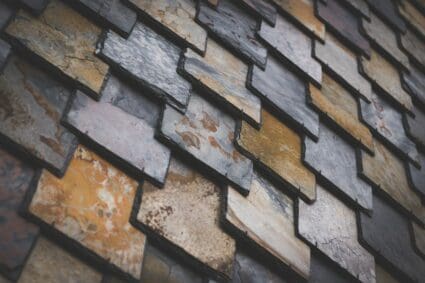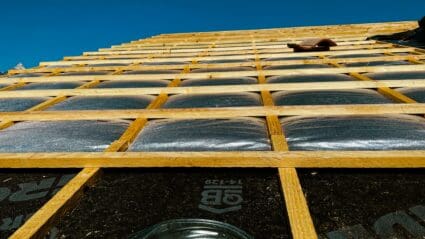Contact Us

4 Tips for Choosing the Best Roof For Your Home

Your home’s design isn’t an afterthought, and your roof shouldn’t be either! After all, choosing the best roof protects your nearest and dearest while keeping your home safe from the elements and adds style and personality to your home’s overall look.
There are a variety of materials that are widely available and worthy of consideration for your new roof, whether you are having a roof installed from scratch or replacing an existing one. Wood, asphalt, composite shingles, concrete, slate, and clay tiles are among these options.
When it comes to selecting materials, style is crucial, but it isn’t the only consideration. The price, weight, and installation requirements of a product should all factor into your decision. Here are four things to consider while selecting the best roof for your home.
1. Roof-Speak
Like all industries, roofing is replete with its unique language and jargon. Before delving into the finer points, it’s useful to understand a few basic terms. When measuring, roofers frequently use the term “squares” rather than “square feet,” as the basic unit of measurement for roofers is the square.
One square equals 100 square feet, or a 10-foot by 10-foot square. About 20 squares make up a standard two-story, 2,000-square-foot home. Understanding this terminology can aid your overall comprehension of the costs involved in selecting the best roof and how materials are priced.
2. Cost of a New Roof
Many factors go into the final cost of your new roof, the price of materials being just one. Your roof’s current condition will, of course, impact the final price tag. When upgrading a home roof, consider the following factors: do the old materials need to be removed, or does the underlying structure need repair? These things are costly and time-consuming.
Another aspect that influences the cost of various types of roofing is the shape of the roof. A gable roof with few or no gaps in the planes is far easier to roof than one with vent pipes or a chimney. Roofing a house with several chimneys, valleys, or skylights requires substantially more skill and time. Knowing the costs and requirements can help you select the best roof material for the job.
 3. Roofing Material
3. Roofing Material
When you remodel your home, the existing roof will almost always play a role in determining the roofing material you use. If you’re considering other possibilities, think about not only the price but also the weight, texture, color, and durability of your selections, as well as what has traditionally been used on a home like yours to achieve the best roof. The style of your neighborhood or the requirements of your homeowner’s association will also influence your decision.
4. Flashing and Roofing Materials
Not all roofing materials are suitable for all roofs. A roof with a low slant or even a flat surface will almost certainly require a different surface material than one with a steeper pitch. The following is a primer on various roofing materials so you can make an informed decision with your roofer:
Asphalt
Asphalt is the most prevalent roofing material, as it is the least expensive option and is easy to install. It’s constructed of a fiberglass material that’s been mixed with asphalt and given a sand-like finish. It is available in two thicknesses: normal single-thickness and a heavier, laminated version. Single-thickness shingles are less expensive than laminated shingles but are less aesthetically pleasing and less durable.
Wood
Wood has been a primary roofing material for generations, but its use is now legally forbidden in some locations due to the risk of fire. Roofs made of this material, which are often composed of cedar, redwood, or southern pine, have a 25-year life expectancy.
Metal
Metal roofing is more expensive than other types of roofing. Copper/asphalt and lead variants are commonly installed as shingles, however, there are metal options that are manufactured for seamed roofs that consist of vertical lengths of metal that need to be soldered together.
Tile and Cement
While often more expensive, tile and cement options are incredibly durable and look great.
Slate
Slate is one of the most durable roofing materials available. Not all slate is created equal, but the best of it can outlast its fasteners. Old slate is frequently recycled and reinstalled in the hopes of lasting at least another century. Slate is also quite costly, priced at around $800 per square.
What is Flashing and Why Do You Need it?
Whatever roofing material you choose, you’ll almost certainly need flashing. It is an essential part of all external construction. It’s usually made of metal or plastic film and used in places where different materials intersect, like a chimney and shingles. Quality flashing keeps your roof watertight in these leak-prone areas.
When it comes to installing a new roof or repairing an existing one, it’s always best to rely on an expert. Together, you can select the ideal roofing solution for your home to achieve the best roof, ensuring a long-lasting and trouble-free installation.
Questions about how to choose the best roof? National First Roofing has got you covered. Get in touch today!
